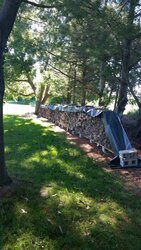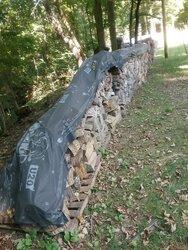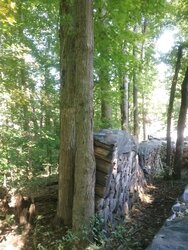Good Morning,
I've stacked this years wood supply in two separate stacks for the drying months. Each one is single wide (16") by 48'. I've tried my best to find a 3' x 48' tarp but I can't locate any manufacturer that sells one that narrow. As of now, I'm just using 4 mil plastic sheeting that I cover with when rain is in the forecast. It's a real hassle and not great at protecting the wood from water.
My question, does anybody have any clever ideas to keep these stacks dry on top while allowing maximum airflow?
My current idea is 2' x 12' corrugated roofing panels (poly or metal). Anybody ever done anything like that?
Thanks in advance
Jason
I've stacked this years wood supply in two separate stacks for the drying months. Each one is single wide (16") by 48'. I've tried my best to find a 3' x 48' tarp but I can't locate any manufacturer that sells one that narrow. As of now, I'm just using 4 mil plastic sheeting that I cover with when rain is in the forecast. It's a real hassle and not great at protecting the wood from water.
My question, does anybody have any clever ideas to keep these stacks dry on top while allowing maximum airflow?
My current idea is 2' x 12' corrugated roofing panels (poly or metal). Anybody ever done anything like that?
Thanks in advance
Jason





